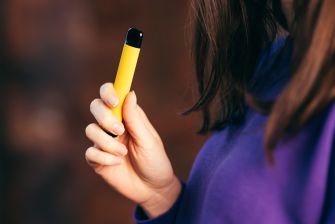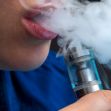The FDA enjoyed a win last week when the Supreme Court agreed with the agency’s refusal to approve the use of sweet-flavored e-cigarettes. The High Court unanimously struck down a lower court’s ruling that the FDA was wrong to block vape manufacturers, Triton Distribution and Vapetasia, from selling their flavored vape products.
The Justices determined that the lower court’s decision against the agency was incorrect, saying the FDA did not “change the rules” for the vaping firms, as they had been accused of doing.
Writing for the Court in FDA v. Wages and White Lion Investments, LLC, Justice Samuel Alito stated that the lower court "cannot say that the FDA improperly changed its position."
The new decision means flavored and sweet e-cigarette applications will be denied.
The Supreme Court case stemmed from a prior suit after the FDA rejected applications from two flavored e-cigarette companies. In response to the denials, the firms filed a lawsuit against the agency.
The crux of the plaintiff’s arguments was that the FDA was acting “arbitrarily and capriciously” by changing the rules and requiring agency approval to sell flavored vapes. Attorneys argued that the FDA switched the regulations and denied the applications for approval in real time during the approval process.
In the lower court documents, the plaintiffs argued that the FDA had used improper procedures by failing to follow the 1946 Administrative Procedure Act which ensures federal agencies act transparently, offer the public the opportunity to participate, and have the agency’s decisions subject to judicial review.
After hearing the case, the Supreme Court agreed with the FDA and dismissed the lower court’s ruling. However, the Justices did not rule on another matter from the original complaint and did not comment on the vape maker’s protest regarding the firms’ proposals to the FDA for marketing and other strategies to keep flavored e-cigarettes away from minors. Instead of announcing a decision on this issue, the Justices ordered the U.S. Fifth Circuit Court of Appeals to reconsider the vaping company’s proposals. The High Court advised the lower court to employ a different legal standard in the matter and to rule about the vape makers’ proposed plans on how to keep minors from having access to vapes.
Numerous health organizations including the FDA agree that vaping, which offers flavored and sweet e-cigarettes, is a public danger for underage children. In the initial court claim, before the Supreme Court’s new decision, the agency’s attorneys argued that the flavored vapes are dangerous to young, developing brains, and are addictive due to nicotine. In 2020, the FDA issued a new policy regarding specific unauthorized flavored vapes, with sweet fruit and mint tastes, noting that minors are attracted to the flavors.
In a 2020 statement regarding the policy, then-FDA HHS Secretary Alex Azar said, “The United States has never seen an epidemic of substance use arise as quickly as our current epidemic of youth use of e-cigarettes. HHS is taking a comprehensive, aggressive approach to enforcing the law passed by Congress, under which no e-cigarettes are currently on the market legally. By prioritizing enforcement against the products that are most widely used by children, our action today seeks to strike the right public health balance by maintaining e-cigarettes as a potential off-ramp for adults using combustible tobacco while ensuring these products don’t provide an on-ramp to nicotine addiction for our youth. We will not stand idly by as this crisis among America’s youth grows and evolves, and we will continue monitoring the situation and take further actions as necessary.”
In addition to the flavored e-cigarettes being banned, the FDA prohibits the marketing of vapes that are “marketed with labeling and/or advertising that resemble kid-friendly foods and drinks such as juice boxes or kid-friendly cereal; products marketed directly to minors by promoting ease of concealing the product or disguising it as another product; and products marketed with characters designed to appeal to youth.”
In a report published in 2019 by the U.S. Centers for Disease Control and Prevention (CDC) and the FDA, the study showed that youth using e-cigarettes at the time was widespread, finding that “1.6 million were using the product frequently (use on 20 days or more in a 30-day period), with nearly one million using e-cigarettes daily.”






